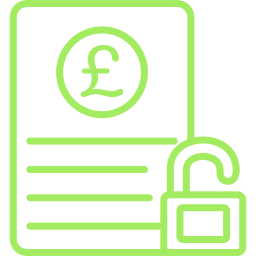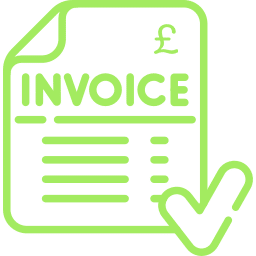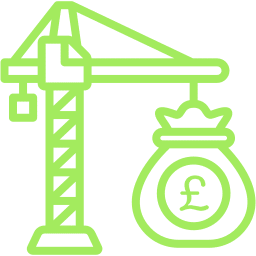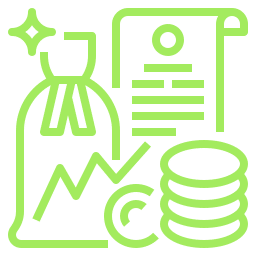Your assets are not only important, but they also change during your business’s lifetime. Identifying, monitoring and keeping track of them can help you when it comes to assessing your business funding opportunities in the UK.
Business Assets Are Important
Business assets add value to your business. Your assets can be both tangible and intangible and at first sight they do two jobs, firstly they can help you get business funding by helping to secure finance, and secondly they are the intellectual driver of your business idea.
Effective management of your assets enable you to take advantage of their value – as and when business funding becomes an option – as well as ensuring you are monitoring their effect on your business day-to-day. The steps you should be taking to manage them include:
- Identifying your business assets
- Valuing your assets
- Risk assessment
- Protecting your assets
- Tracking & reporting your assets
- Using lease options
- Using assets to raise finance
How To Identify Your Business Assets

Your assets can be anything that your business uses to ensure that it continues to trade and operate. Your assets can be subdivided into three categories, tangible, intangible and intellectual assets:
Tangible Assets – These are usually listed on your balance sheet and are assets that have high value because they can easily be sold for a value:
- Buildings
- Vehicles
- Office equipment
- Plant
- Machinery
- Stock
Intangible Assets – These cannot be physically touched and are of perceived value to the business. However they often have very real value:
- Business reputation
- Company skills
- Brand recognition
Intellectual Property – Also a type of intangible asset, these are not contained on your balance sheet but are recognised as adding real value to the business:
- Trademarks
- Patents
- Brand names
- Logos
- Inventions
- Formulas
- Copyrights
Valuing Your Business Assets
The first step to managing your business’s assets is to have a clear understanding of each type of assets and how they relate to your business.
Assets are clarified in different ways and have different categories. This is vital to effective accounting and how you manage each one. Your balance sheet will list these different categories, often as either current or non-current.
A current asset can be converted very easily into cash, things like cash reserves or stock inventory, whereas a non-current asset might take more than a year for it to realise its cash value, like land, property, plant and machinery.
Compiling a ready list detailing all your current and non-current assets, including your tangible and intangible ones can help you identify how liquid your assets are as well as being a go-to reference when looking to inject external finance into your business through business funding in the UK.
- Identify your assets
- Classify and list your assets
- Calculate total current assets
Risk Assessment

Controlling the risks in your workplace is a standard part of health and safety law, where you take simple steps in order to avoid any hazards presented to your employees, customers and to yourself. Your physical (tangible) assets should be risk-assessed to ensure they are compliant with legislation which means documenting and recording safety considerations and ensuring all information that users need to know is either displayed or readily accessible.
Protecting Your Assets
Protecting your assets means ensuring up-to-date valuations for insurance purposes or by taking steps to protect your intellectual property.
Protecting your assets minimises potential risks to your business – maintaining them helps increase the health and safety of your business as well as avoiding lost time and inefficiency. When it comes to intangible assets like customer lists, trademarks or patents then you’ll need to safeguard them to avoid competitors using them or to protect them against industrial theft.
Limited Liability
The difference between being a sole trader and becoming a limited company when it comes to your business assets is enormous. When you operate as a sole trader and a customer decides to claim against your business then your assets become exposed to potential claims. Whereas when they are owned and operated by a limited company it offers a level of protection against this happening.
Insurance
The right level of insurance should always be a consideration when you start-up your business, but it also becomes more important as your continue to develop it. Arranging the right level of cover for your assets helps protect against operating losses when machinery of plant goes down as well as ensuring that any claims against you have another point of reference.
Knowledge Assets
As a small business you are probably the heart and soul of your business. You also hold an immense amount of business knowledge which for some enterprises IS the business. Documenting and sharing that knowledge is a way of managing what can be a very intangible asset (especially when a business is looking for equity investment). It might also cause issues in the future development of the business, so making this knowledge accessible to others can be an effective strategy to manage this intangible.
Lease or Buy?
Knowing what type of asset you hold, how much it costs you to purchase and what its value is at any given time in its life will allow you to consider how you can potentially save money. It might be cheaper to offload the machinery and replace it with another, more up-to-date machine. Or you could consider asset financing it and lease it instead. Freeing up cash flow and/or improving efficiency.
Tracking & Reporting Assets
One of the most under-utilised practices in business is how you track your stock and inventory on a day-to-day basis. Inadequate asset tracking can lead to loss of profit. The bigger your company grows the more you need to stay on top of your asset reporting. Combined with your bigger assets this can present an inaccurate value of your business at any given time.
Start with accurate figures
Establishing an accurate baseline is essential; when you start with errors in your reporting, then your numbers are always going to be based on these errors.
Allow for depreciation
Whatever asset management reporting (or software) you use, it needs to be scalable; which means it is able to both grow in value or depreciate. If you do not allow for depreciation in value then you might find yourself paying more in tax (on your profits) and on insurance.
Older assets
Without due diligence in reporting and tracking assets, older or damaged assets might still be on your system presenting an imperfect picture of the value of your business.
Asset Tracking Stock & Inventory
Keeping track and identifying where your stock is can be a challenge to any company, especially those with large amounts of, or high turnover of, stock. Knowing where your assets are at any given time can ensure fewer delays and save you time and money. This is where stock control methods such as barcode scanning become important; it can eliminate excess stock and help manage cash flow better which can improve a company’s bottom line. It can also highlight the need for rotating stock and utilising or offloading old stock.
Using Assets to Raise Finance

There are many ways in which you can use your assets to help you finance or refinance your business. In the UK the biggest business funding methods are:
Refinancing
Allows a business to unlock the capital already contained within an asset whether that be new machinery, equipment or vehicles. Many of the advantages of asset finance can also be relabelled for refinance too i.e., monthly repayments and increased cash flow. An important consideration is that asset refinance is also available even if there is still money owed on the item, for instance, if you are on a hire purchase agreement, the amount you have already paid out on the asset can be refinanced.
Selling assets
Selling your sales ledger through invoice finance has been a popular way of business funding in the UK for a long time and there are many different types of invoice finance available to suit your needs.
For any business in the UK, monitoring and valuing your assets should be conducted in a structured and documented manner. It can help a business avoid overpaying when it comes to corporation tax and insurance as well as being one of the principal options to utilise and leverage finance. For every business the nature of their intangible assets shouldn’t be underestimated, as these are also considered when a business looks for more formal investment opportunities through business funding by UK angel investors, equity investment or peer-to-peer loans.
If you are looking to utilise the value of your assets to refinance your business or look to inject a cash boost, then talk to Funding Guru to discuss your funding requirements.






















